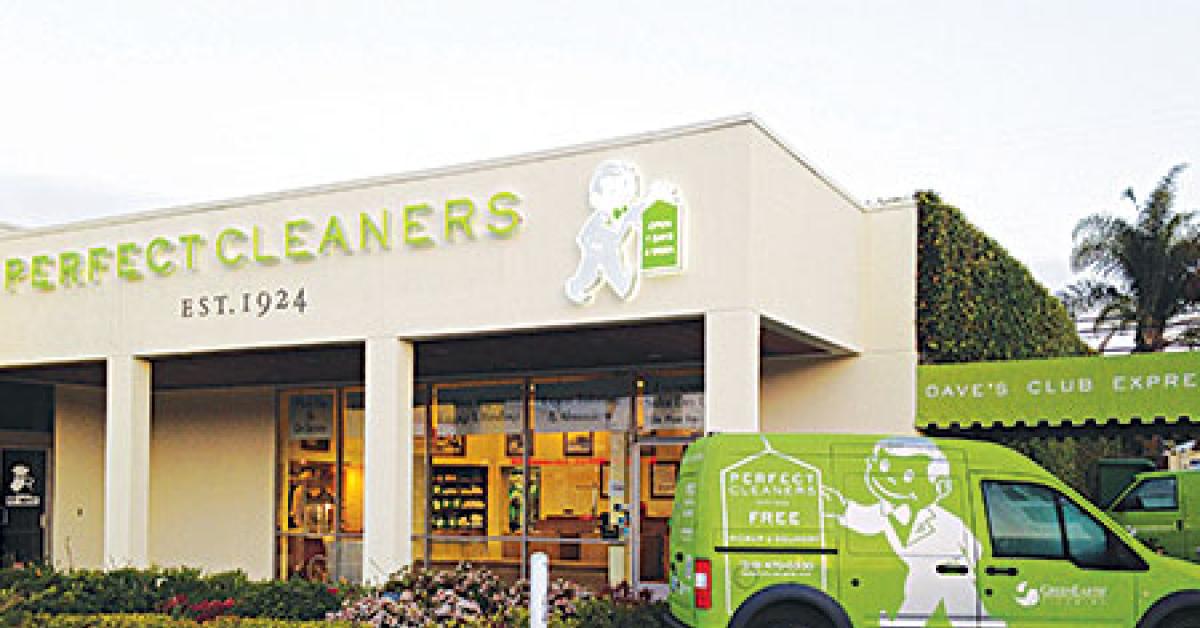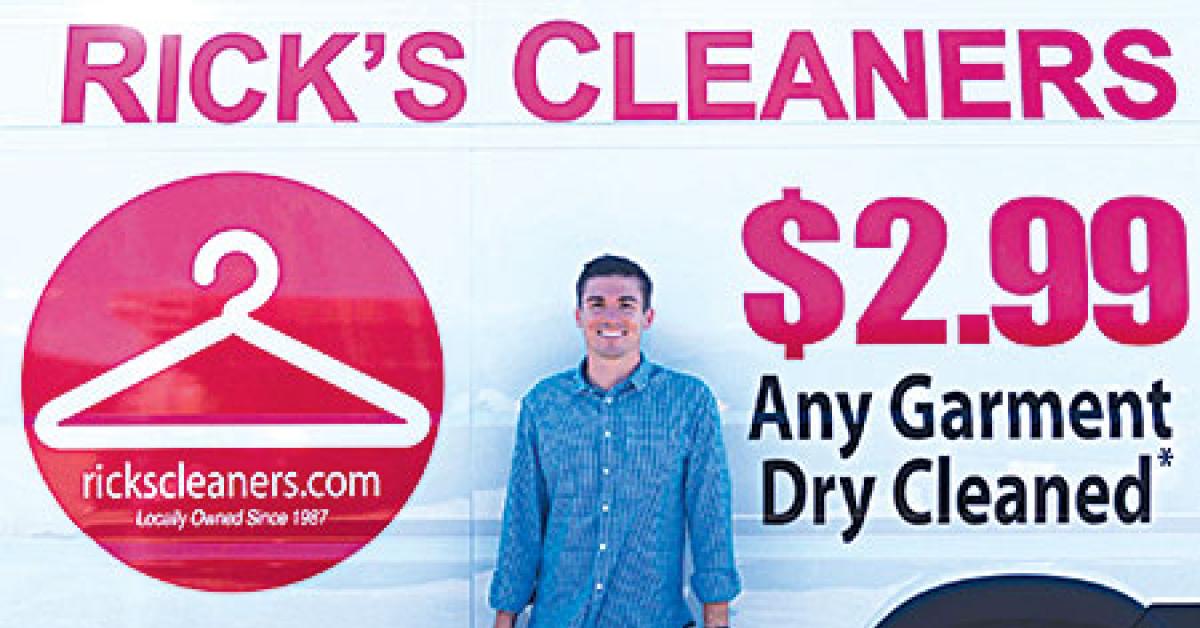CHICAGO — Biometric shirts, mood dresses, and a lobby-filling bolt of “starry” fiber optic fabric that glows!
Here they come: wearable-tech clothes, hitting your counter soon, or maybe even today.
Not yet a full-on commercial reality but getting closer by the month, e-fabric let’s call it (e-fab for short), is practically here. These clothes have pockets for electronic devices, or further, sensors attached, or the ultimate, wires intertwined. Are drycleaning operators seeing any “electro-duds” yet?
“Yes I have heard of it,” relates third-generation drycleaning owner Dave Suber, who runs West Los Angeles, Calif.-based Perfect Cleaners, in business since 1924. He says: “we have a few clients that are in the entertainment industry and have brought us some jackets and pants with wiring.
“I think it’s a high-tech gimmick-type clothing, some of the pieces did light up and one had a smart pocket in the inside breast pocket to connect to the phone,” Suber says. “What it actually did I am not sure.”
Cleaning these smart clothing items will take some adjustment by the fabricare industry. Very fine care and hand spotting will come into play.
Suber points out that these items will need to be inspected closely for wiring and batteries that are sewn into fabric, and a release on all items will be necessary.
“These items,” he relates, “will require special care from a high-end cleaner. Most items will have to be spot-cleaned only. We have to be proactive in handling these items as the manufacturers did not take into account the cleaning process when designing these.”
Smart shirts may someday be advanced enough to sense your mood, and reflect it outwardly in your clothing hues, but these garments won’t be able to talk to you and tell you how to clean them.
But, for instance, wearable tech is being tested out and tried by college and pro athletic teams to deliver biodata from a small, pocket-size technology pack carried in the uniforms players wear.
In one real-world example from an athletic analytics firm in Australia, called Catapult, the Buffalo Bills NFL team had their Dry-Fit Nike shirts made with a pocket in the back to hold the firm’s small device that, in so many words, helps dictate players’ day-to-day workload based on downloadable analytics.
In another example, a firm called LumiGram, a France-based company with the catchphrase “Light For Style,” produces and sells several lines of luminous fiber optic clothes, fabrics and textiles.
Then there’s London’s CuteCircuit company, which first brought out in 2002 the HugShirt, a shirt with electronic sensors that can, according to the firm, transmit the feelings of getting a hug to another HugShirt wearer anywhere in the world.
This firm currently produces various lines of glowing apparel and accessories and has been, over the past several years, a presence at several international wearable technology shows, of which exhibitors and attendees seem to be growing.
For the past 10 years, Quebec-based CTT Group has worked with “technologies that add to textiles,” as its website indicates. Military, fashion, medical, protection, transportation, and naturally, sportswear, are all mentioned as markets for smart textile technologies, it notes.
Right about now, as you think for a moment about “blinking-blouses” and “techno-trousers” hitting your counter, the words “hand-wash” might be flashing across your own cerebral “network.”
“I think at this point most is washable since it is mainly in athletic wear,” relates Mary Scalco, CEO of Laurel, Md.-based Drycleaning & Laundry Institute (DLI), an organization which, according to its website helps “member-professional dry cleaners succeed in the garment care industry.”
“What we have seen has the wiring encased so cleaning should not be a problem,” Scalco says, “I would think at some point we could see devices that measure blood sugar for diabetics, heart rate for heart patients, calorie intake for dieters, etc.
“I would think most of these would have to be worn close to the skin, so they will probably be washable, but for commercial wash I would be concerned about the high temperatures and the alkalinity.”
A day is coming when e-fabric might allow you to place your takeout order with a mere flip of your collar to activate a signal carrying your pre-selected favorite. Clothing may even, someday, with the subtle touch of your pant leg or shirt sleeve, remotely start your coffee-maker, or your car!
E-fab, right now, seems to be only at the edges of our periphery for cleaning. But the potential looms.
Cambridge, UK-based IDTechEx writes in its research report E-Textiles: 2016-2026 that electronic textiles are on the cusp of rapid growth, predicting a $3 billion market within 20 years.
TECHIE-TEXTILES
What might we expect to see on the racks for smart clothing, sooner rather than later?
Enter Ian Noble, owner of Rick’s Cleaners in Austin, Texas, with 16 locations and 4 plants: “Wearable fabric is on the rise. There are many companies ranging from mega manufacturers to startups that are incorporating ‘smartness’ into our clothing.”
He feels this smart clothing can be used to track “distance, heart rate, calories, play music, as well as many other things and usually transfers data through a Bluetooth connection with your smartphone.”
Noble also thinks that, “riding the wave of the increased ability to monitor personal health and connectable devices, the smart wearable technology we already see online should be somewhat more noticeable on the shelves of our retailers over the coming years.”
His father, Rick, opened the first store in Austin in 1987, and Ian was born the following year.
“I remember the fun memories growing up and spending time in the plant. This business is one that requires being on site and extremely involved in the day-to-day operations in order to be successful,” he says. “Only later did I find out that's what drew me to it.”
He took ownership of the company on January 1, 2016, and considers himself a hands-on owner who oversee the daily operations of the business by working in the plants, stores and office daily.
He indicates to American Drycleaner that whether e-fabric takes off and becomes a staple in fitness and casual merchandise or not, it is important for drycleaning owners to be aware of it and begin to teach staff and inform customers how it should be handled.
These e-fabs will have electronic threads woven into them. But there can be more to it. Groups such as Nanowerk and others are discussing nanotubes and other edge technologies that will one day make your clothing smart, fashionable, and comfortable.
How will drycleaning owners handle them?
“Our counter staff has not been trained on this, but they will be. I think we can keep training very simple at this point,” Noble says.
“Most likely, if a customer brings a wearable tech item to the cleaners, they will be proud to tell us about it. This works to our advantage,” he notes. “It always favors the dry cleaner when the customer brings out-of-the-norm things to our attention.”
The first stop is always the care label. “I can nearly guarantee with 99.9% certainty that all wearable tech garments will be labeled ‘Do Not Dry Clean’ and that most of them will be hand-wash, hang-dry. Wet cleaning or hand-washing should be the only option,” he advises.
“If you do not want to mess with wearable tech I would make it clear to your staff that regardless of the label you will not take it,” he cautions.
The items will often come with high price tags, he points out, and may be more susceptible to damage due to the advanced nature of the garment. This will ultimately put the dry cleaner at risk regardless of signing a release or not.
“As we all know,” Noble says, “having your staff get a signed release from the client is important, but even with fair warning, most of the time it still won’t change the sour feeling clients have toward your business after something becomes damaged.”
He goes on to relate that if you do decide to accept the items at your location or through your route business, “I would hand-wash all items and hang them to dry. I also suggest educating your customers by e-mail marketing or a website ‘FAQ’ so they understand the risks involved.”
When and if e-fab does reach the commercial market, what might be the cleaner’s role actually be?
Noble believes that the cleaners role will remain very minimal if and when wearable tech becomes common. “The more common items may be fitness-related, and commonly-worn items such as polos and jackets may lag,” he relates.
Due to the cleaning restrictions and high price of the items, he feel that most people will do it themselves at home in cold water and minimal agitation followed by hanging the items up to dry.
“This is common practice already for many that clean their fitness apparel at home,” he says. “For female consumers specifically, brands such as Lulu Lemon, Athleta, and Nike are already done this way.”
But if it did hit your counter, how would a care label read on, say, an iridescent, light-up blouse that contains electronics? Only the future will tell.
Check back Thursday for the conclusion.
Have a question or comment? E-mail our editor Dave Davis at [email protected].



